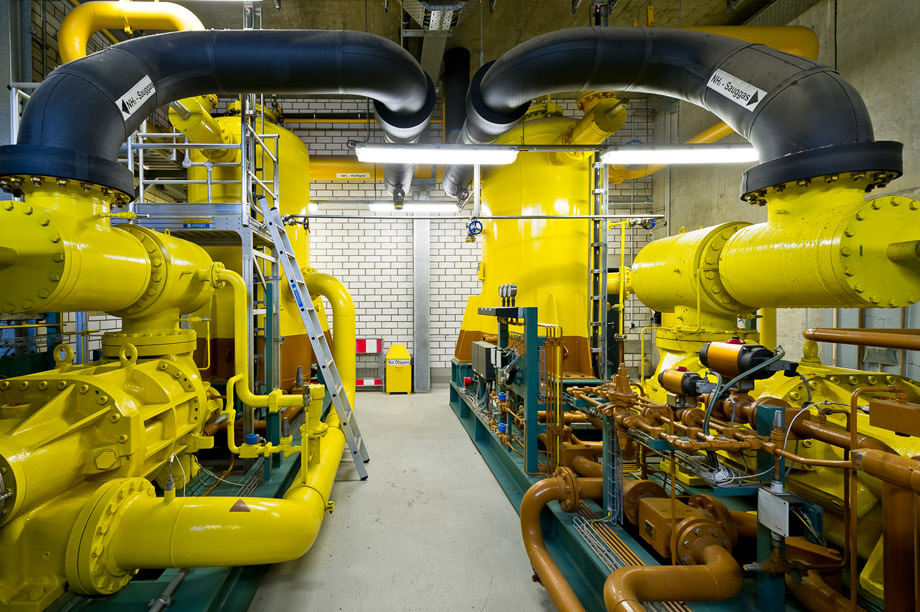Contact us!
Your contact person:
DominiK Zeiler
Head of Production Cooling and Compressed Air
Kasteler Straße 45
+49 611 962 8245
+49 611 962 9259

In order to supply your on-site operation in the Industrial Park Wiesbaden with process and ambient cooling, InfraServ Wiesbaden operates a central ammoniac-refrigeration unit with an installed cooling capacity of 24 MW.
Cooling is generated by seven ammoniac screw compressors with cooling capacity units of 2.5 to 6.5 MW.
Cooling is supplied to you by two ammoniac refrigerant circuits (-5 °C and -15 °C) and one chloride brine refrigerant agent circuit (-8 °C).
The implementation of these generators is redundant, meaning that supply is secured even if one of the generating units should fail.